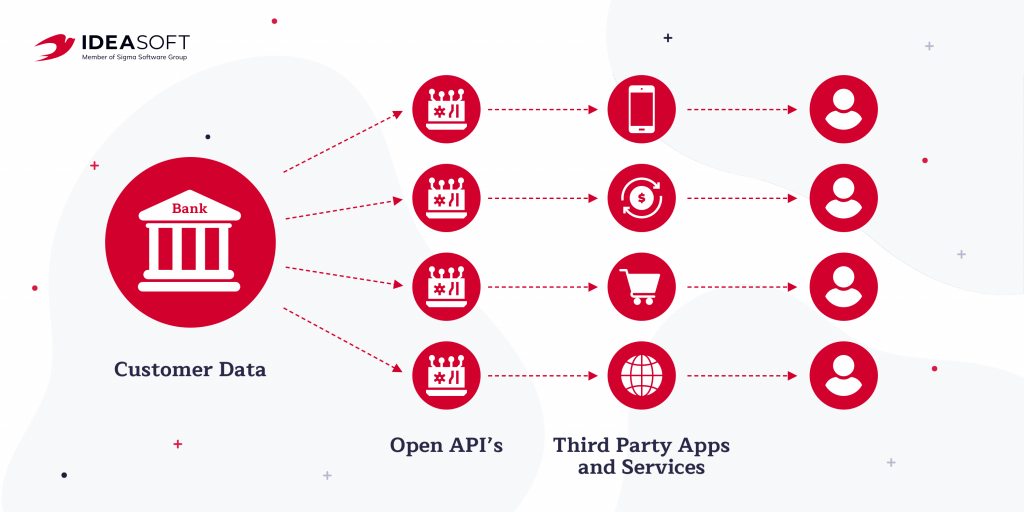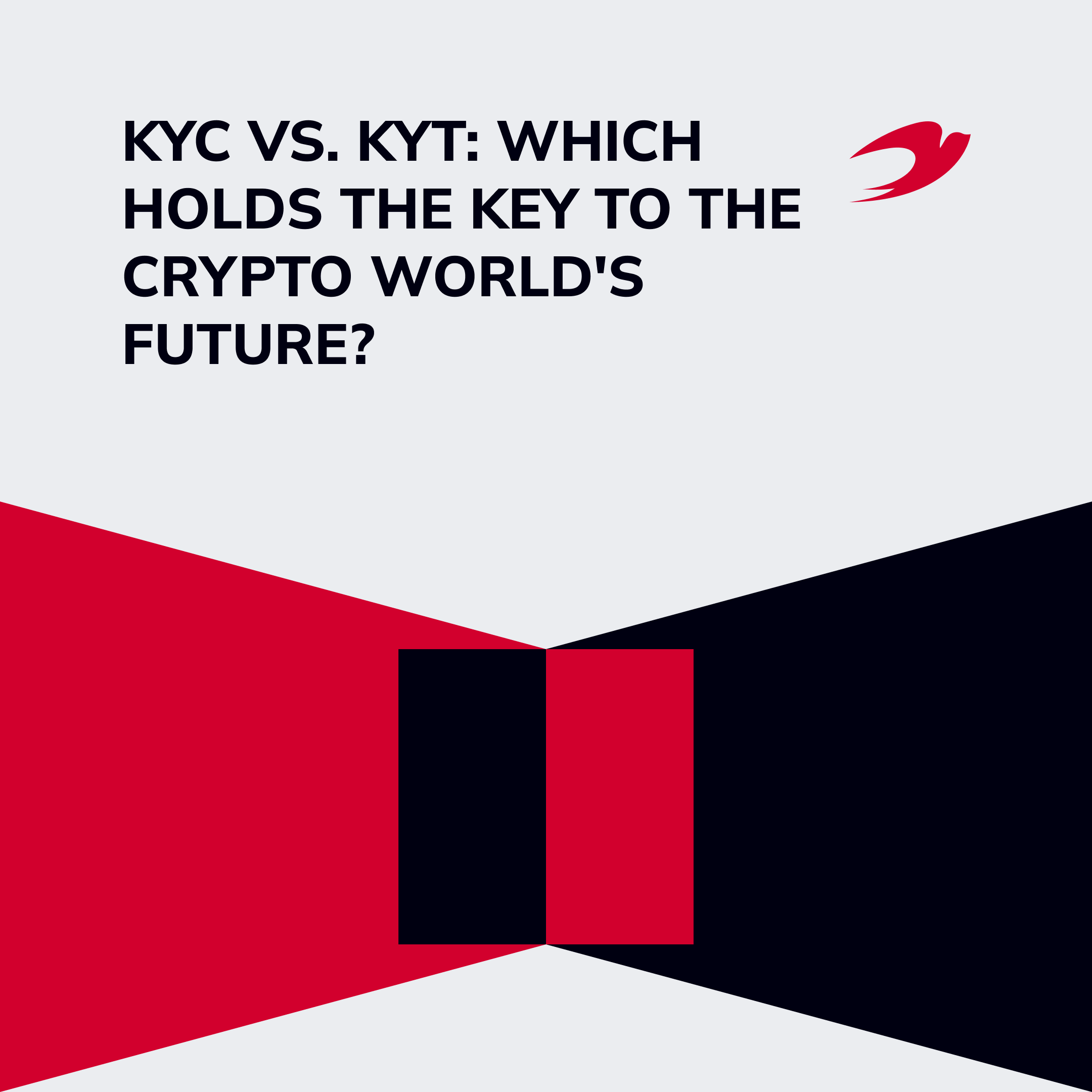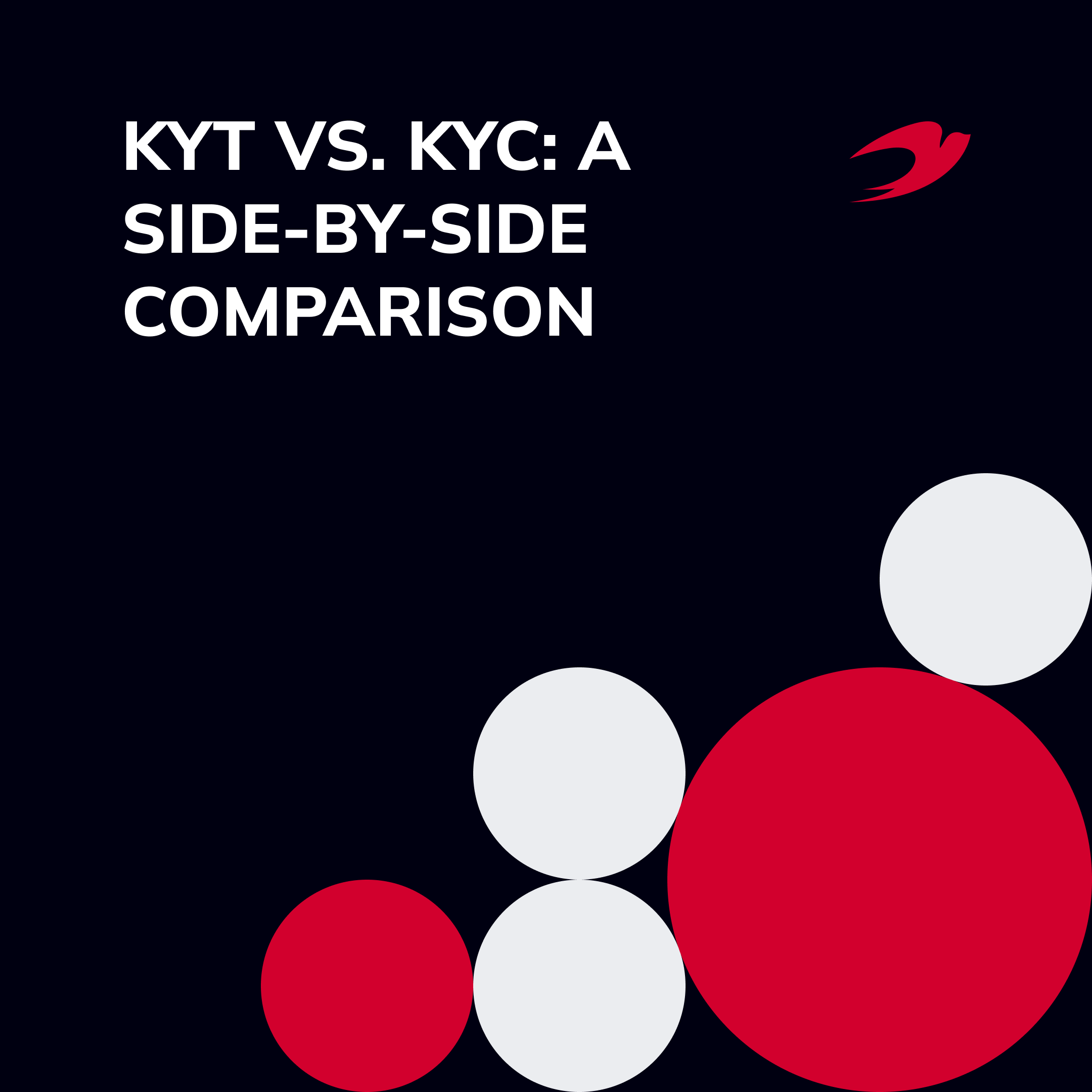The concept of open banking has become one of the most revolutionary innovations in the financial industry in recent years. As a bridge between traditional banks and fintech, open banking is designed to provide better, more reliable, and modernized services to its customers. Surprisingly, a lot of business owners don’t know how open banking works. So let’s fix that. In this article, we will look at the benefits of open banking, open banking API development, and the prospects for this concept in 2021.
Table of contents:
- What is open banking and how does it work?
- Pros and cons of open banking APIs
- Open banking API development: security flow
- Open banking and fintech
- Open banking in 2021
- Wrapping up
What is open banking and how does it work?
Open banking is a system in which banks open up their application programming interfaces (APIs). It allows fintech companies or other third-party services to access clients’ financial information and conduct financial transactions on the clients’ behalf. Open banking gives account holders greater financial options. The more participants in the open banking system, the greater the competition. As a result, the diversity and quality of services increase, prices decrease and end-users benefit from these changes.
Open banking allows fintech companies to develop better solutions for managing personal finances and it also forces traditional operators to improve their offerings or collaborate with startups. In this way, open banking promotes competition in the banking industry. But what is API in the context of open banking?
APIs are a set of codes and protocols that define how different software components should interact. Generally, they allow different applications to interact with each other. In open banking API interfaces are used to pass commands to third-party vendors.

APIs are necessary for the function of Banking-as-a-Service (BaaS), a key component of open banking. BaaS is an end-to-end process that connects fintech companies and others with banks’ systems directly through APIs. As you can guess, it is impossible to efficiently connect banks and fintech companies without open banking API development.
Today, open banking APIs can do the following:
- Track multiple user accounts, providing a statistical reconciliation tool.
- Automatically transmit financial information to potential lenders, minimizing paperwork in obtaining a loan.
- Provide convenient and informative management of personal funds.
- Facilitate asset management for small and medium-sized businesses.
- Transfer funds between accounts.
Pros and cons of open banking APIs
The most important asset of 2021 is data. Banking data is the most valuable piece of information used to understand how consumers and businesses are spending, growing, or saving assets. Open banking allows third-party services to aggregate data from multiple financial institutions to further analyze spending and income. This analysis also makes highly accurate budget planning possible.
The benefits of open banking and APIs are not limited to consumers. They also apply to service providers. This way, your customers will be more satisfied with your services, and you will be able to meet market demands and increase your customer base with the help of innovations.
Let’s take a closer look at some other benefits of using open banking.
- Open banking benefits for customers. Open banking gives the freedom to choose any financial service provider. It allows people to use only the banking products they want, easily manage their finances, and make informed decisions about how to do so.
- Open banking benefits for banks. Open banking provides an opportunity to stay ahead of the competition by allowing banks to collaborate with financial startups and other non-financial institutions. Open banking API development helps banks increase their attractiveness as legal entities, thereby enabling them to meet the ever-changing needs of both existing and potential customers.
- Open banking benefits for fintech companies. Open banking gives limitless opportunities to fintech companies to meet consumer demands for new and better services. For instance, personal financial management, bank account comparison, and access to credit services through a single application.

Open banking API development provides tremendous growth opportunities for fintech companies that offer secure payments or collect payment statistics. APIs in the context of open banking make it possible to create hybrid products that include services from different developers. Some banks already have bank-based marketplaces with ready-to-use services from different vendors. This allows customers to choose the best option, which also contributes to the development of transparency.
Open banking API development: security flow
Now let’s find out how open banking APIs work. At first glance, the concept of using banking APIs may seem insecure, but this is an erroneous impression. In open banking, information security comes first.
Open banking API works as follows:
- Third-Party Provider (TPP) gets clients’ consent to access their data and to act on their behalf.
- Third-Party Provider (TPP) creates a token that is valid for a limited time frame and that represents the client’s consent to access his or her data as well as to act on their behalf.
- Third-Party Provider (TPP) authenticates with the bank and sends the token.
- The customer receives a request from a bank to authorize this token and accepts it.
- Third-Party Provider (TPP) gets access to the client’s data provided by the bank.
- Third-Party Provider (TPP) processes the client’s data and then the token expires.
It can be seen that open banking ensures high security. No fintech startup can use customer data without customer consent. Nevertheless, how efficient is open banking in fintech?
Open banking and fintech
Fintech after Covid-19 has significantly changed thanks to open banking in particular. It encompasses various techniques to increase openness and to support collaboration in the financial sector. This includes the exchange of real-time data, provides opportunities for other companies, and collaborative analytics of the collected data.
All integrations are only triggered by customers. For example, when a customer wants to transfer data on bank expenses to a budget accounting application, the bank gives him or her the right and the necessary tools to do so.
The market is constantly expanding. As a result, there are intermediary services like TrueLayer that offer API platforms for fintech developers. Many companies, including PayPal, are gradually moving toward an open platform format that gives third-party developers access to payment infrastructure and data through APIs. For example, in 2019, Visa launched the Visa Next platform, which brings together payment services for banks and fintech – they can be used individually or in an integrated manner.

Banks are also moving towards a single marketplace model with a wide range of services, where payments are just one of the elements. For example, QPlatform works on the two-sided marketplace principle. Banks and fintech companies can choose services from different categories: neobanking and KYC, credit pipeline and green finance, payments, and acquiring. The system works according to the App Store principle. A company selects the required solution, tests it in a sandbox, and immediately integrates it as a ready-made business unit. Another example is ING’s Yolt platform, which includes both the bank’s and its partners’ products.
Open banking in 2021-2022
Once again, open banking provides access to banking data for partner companies using APIs, so developers can create new fintech applications and services for specific banks’ clients. In Europe, the idea has been promoted for several years thanks to the adoption of the PSD2-regulation directive, which obliges banks to prepare an open technical system for integration with its resources.
The number of open banking users worldwide is expected to grow at an average annual rate of nearly 50 percent between 2020 and 2024, with the European market being the largest. In 2020, Europe had approximately 12.2 million open banking users. This figure is expected to reach 63.8 million by 2024. Impressive numbers, right?
A single payment space has appeared in Europe, and because of this, customers will be able to choose attractive products and services at different banks. Also, they will be able to manage accounts from different banks in one app, pay for services through it, and receive much more personalized offers on loans, leasing, and other services.
Since open banking results in competition, many financial institutions are reluctant to take the necessary steps. A key factor in the spread of open banking in many countries has been the regulation of the industry. In the UK, where open banking is gaining momentum, regulators have required the nine largest retail, small and medium-sized account operators to use open APIs to allow third parties to access customer-agreed data and initiate payments on behalf of customers.
In countries with less-developed open banking legislation, including the USA, Japan, and Canada, open banking services are likely to continue to evolve only under the influence of consumer demand and competitive pressures.
Wrapping up
The sphere of online financial services is being transformed by open banking. So companies that want to move their businesses to the next level are discovering the opportunities of open banking API development. Summarizing all of the above, there are three conclusions:
- Fintech is a real competitor to traditional institutions. However, fintech and banks should be “friends” to create the most positive customer experience. This should be facilitated by open banking.
- Startups can become an intermediary between banks and consumers. In the future, users will be able to use one app for all purposes.
- In today’s fintech, there are three areas of focus that are boosted by APIs: lending, financing, and payment systems. Products are becoming “closer to the people” and even simpler.
Now allow me to explain how we can help your business grow. IdeaSoft has extensive experience in developing software solutions for the fintech industry. Working with large banks and fintech startups, our development team has formed the best practices for ensuring the highest level of security, functionality, and quality of banking software products.
IdeaSoft’s expertise has been cemented by more than 250 completed projects. The company can help you cope with a wide range of software development tasks, from business analysis and design to programming, testing, and support. Feel free to check out our portfolio and contact us to discuss your project.




